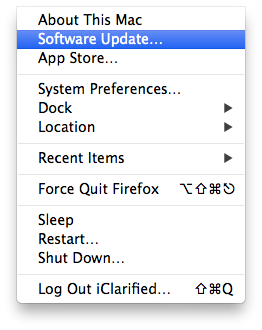Check For S Install Of The
These types of apps will only cause your Mac issues later after the install of the new OS X version and you will have to completely uninstall these types of apps later.
If its a PowerPC Mac, its already running the newest OS it can.
If its an Intel Mac, click here, install the DVD, and run Software Update.
Do this first. Check that your Mac meets the System Requirements for Snow Leopard.

Be sure to make a Backup of your Current System Before Upgrading.
I have all the requirements OK but still when i try to install snow leopard it says i can not install it on this computer I attach screenshot.
This gives you basic info like what version of OS X your iMac is running, the speed of your iMacs CPU and how much RAM is installed.
A larger window appears giving you a complete overview of your iMacs hardware specs.

This will tell us everything about your iMac so we may begin to help with your iMac issues.
Model Name: MacBook Model Identifier: MacBook4,1 Processor Name: Intel Core 2 Duo Processor Speed: 2.4 GHz Number Of Processors: 1 Total Number Of Cores: 2 L2 Cache: 3 MB Memory: 2 GB Bus Speed: 800 MHz Boot ROM Version: MB41.00C1.B00 SMC Version (system): 1.31f1 Serial Number (system): W88091JD0P2 Hardware UUID: C812196F-483E-56E5-AC30-DA013E9FB41F Sudden Motion Sensor: State: Enabled.
Check For S Download Version Will
If I get the download version will it work Do I need to backup first all my files before installing thanks.
Gray Discs are machine specific, if you were planning to try the MBPs Discs on another Mac.
Then, use either OS X Time Machine app to backup your entire system to the external drive OR purchase, install and use a data cloning app, like CarbonCopyCloner or SuperDuper, to make an exact and bootable copy (clone) of your entire Macs internal hard drive.

Then, determine if your Mac meets ALL minimum system install requirements.
Check For S Mac OS X V10
Mac OS X v10.6 Snow Leopard system requirements Purchased Installer disc here.
To install Snow Leopard for the first time, you must have a Mac with: An Intel processor An internal or external DVD drive, or DVD or CD Sharing At least 1 GB of RAM (additional RAM is recommended) A built-in display or a display connected to an Apple-supplied video card supported by your computer At least 5 GB of disk space available, or 7 GB of disk space if you install the developer tools.
To use OS X 10.7 Lion, make sure your computer has the following: An Intel Core 2 Duo, Core i3, Core i5, Core i7, or Xeon processor Mac OS X v10.6.6 or later to install via the Mac App Store (v10.6.8 recommended) 7 GB of available disk space 2 GB of RAM To install OS X 10.8 Mountain Lion, 10.9 Mavericks (free upgrade, but currently unavailable) or OS X 10.10 Yosemite (currently available free upgrade) you need one of these Macs: OS X 10.8 Mountain Lion purchased emailed download code here.
The use of Rosetta ended with OS X Snow Leopard as the Rosetta application was licensed to Apple, from a software company called Transitive, which got bought out, I believe, by IBM and Appe could no longer secure their rights to continue to use Rosetta in later versions of OS X.
So, you would need to check to see if you have software on your Mac that maybe older than, say, 2006 or older.
If you have any commercial antivirus installed andor hard drive cleaning apps installed on your Mac, like MacKeeper, CleanMyMac, TuneUpMyMac, MacCleanse, etc.